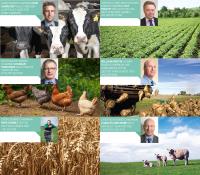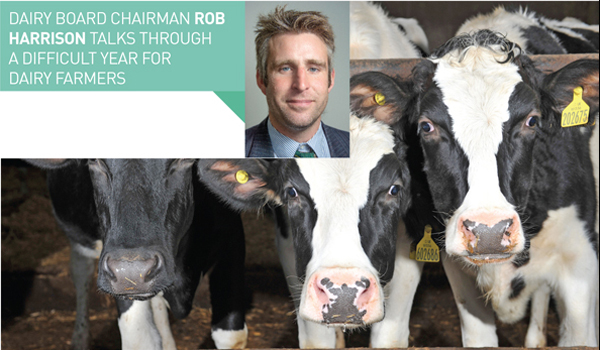In a year where we’ve seen milk prices drop to seriously unsustainable levels, with only those on retailer aligned contracts or producing for niché markets such as organics buffered from the market reality of the global dairy downturn, I can only admire the resilience and determination of my fellow farmers.
As I write this, UK milk production is still far above 2014 figures, which in itself was a strong milk production year. While the UK milk price average is just above 22ppl, I know that far too many farmers are receiving a milk price around 15ppl.
In a year that has been so difficult it’s hard to see any positives, but there have been a few, and I want to mention these before we move ahead to look at what 2016 may bring.
In September, after intense lobbying in Brussels, Commissioner Hogan announced a €500m crisis package, the vast majority allocated to the dairy sector. By now dairy farmers should have received their dairy fund supplement, but there were also important changes to market management measures (i.e. opening private storage for cheese) and the setting up of a high level group to look at farm competitiveness.
2015 around the sectors...
 Read the thoughts of our board chairmen across the following farming sectors:
Read the thoughts of our board chairmen across the following farming sectors:
With continued and significant pressure on the market it was also good to see retailers taking our concerns on-board with a number of positive initiatives. Asda, Morrisons, Aldi and Lidl announced long-term minimum pricing for liquid milk, Tesco extended their COP pricing to cheese, and we saw huge strides on improved British procurement and labelling.
We’ve also delved into food service and food manufacturing in our goal of encouraging sustainable sourcing across all dairy end users. There’s still much to do here.
There’s hardly been a week in 2015 where dairy hasn’t hit the headlines. Farmers right across the country have talked honestly about the impact of the market downturn on their businesses and their livelihoods. The British consumer clearly cares about us. Nowhere was this more evident than during Red Tractor week where we visited retail stores across the country to talk dairy and Red Tractor.
2015 was also a year where at last we saw more interest in developing risk management tools for dairy farmers. Little may have changed on-farm, but we’ve taken the message to government and to Brussels and raised this with milk buyers and a number of end users. The volatility we’ve faced this year clearly shows that farmers need to have some ability to manage price volatility of their output (milk price) as well as their inputs.
I’ve met with the Secretary of State and Farming Minister regularly over the past 12 months. There have been positive developments in the push for improved labelling, the extension of profit averaging to five years, the focus on opening new export markets and support in developing risk management tools.
What lies ahead?
Even the best forecasters got it wrong in 2015. Today they’re saying that we’re not looking at a market uplift until mid-2016 at the earliest. Much could change before then as we’ve seen weather and political events have major impacts on the dairy market.
One thing I know for sure is that given the right tools and support UK dairy farmers can compete with the best, but we need to work together to do so. Global dairy demand is going to grow and we have focused, ambitious farmers than can help satisfy that demand.
Personally, 2016 will also see a major change for me as I step down as chairman of the national dairy board to focus on the dairy farm back home.
